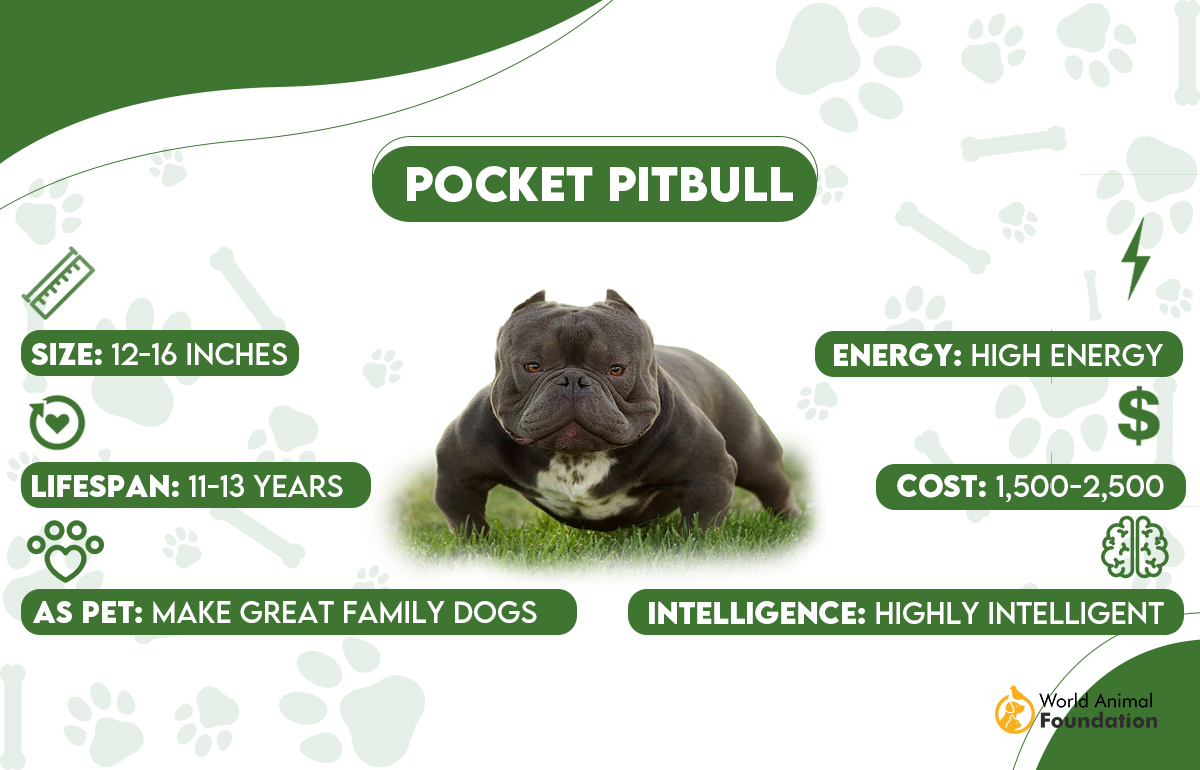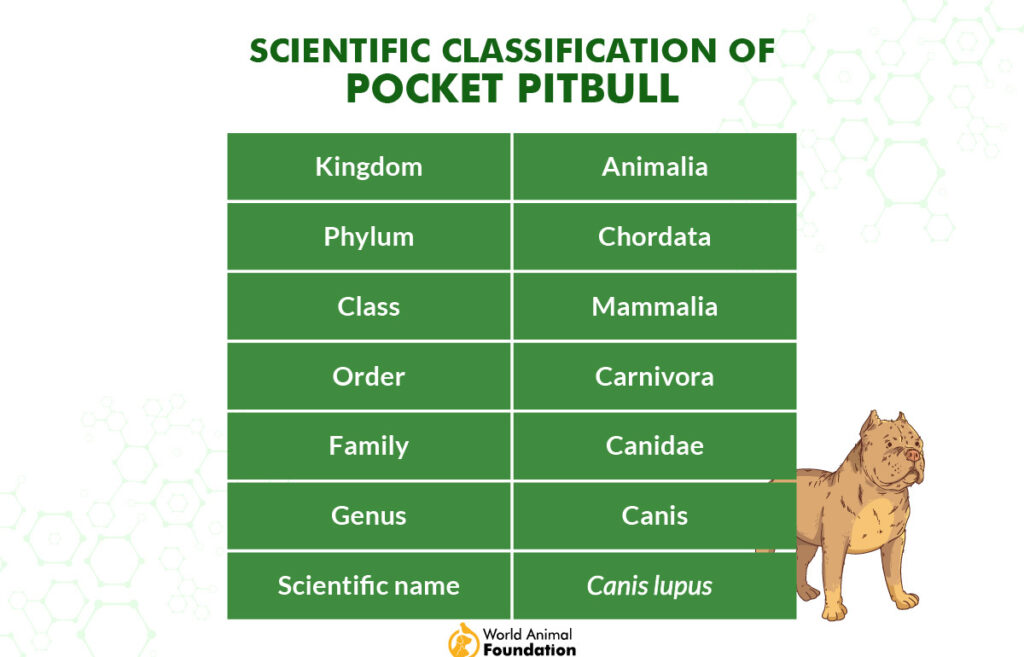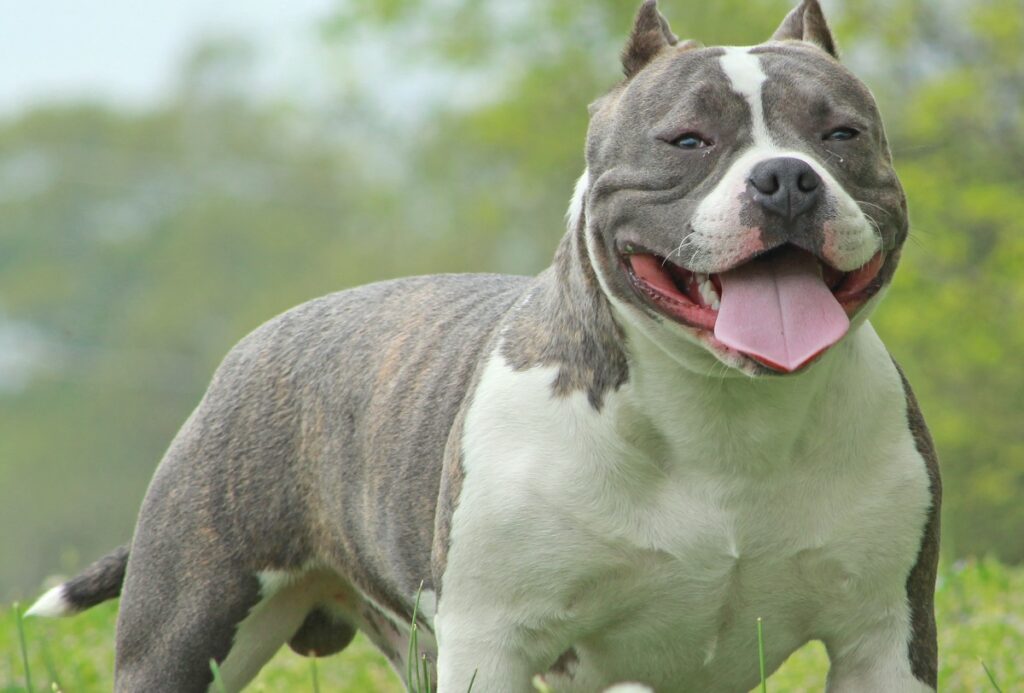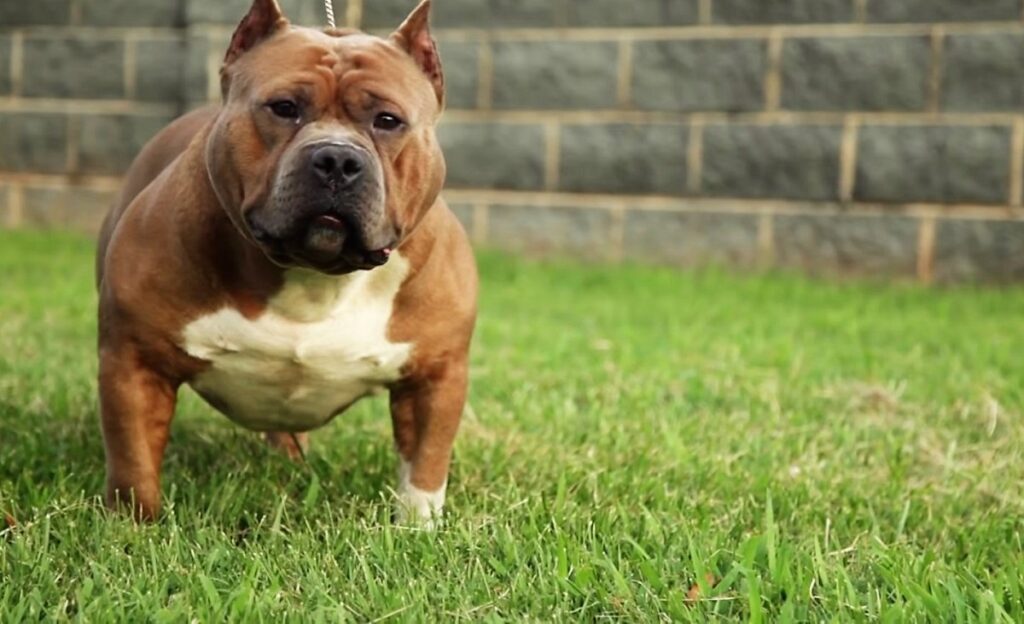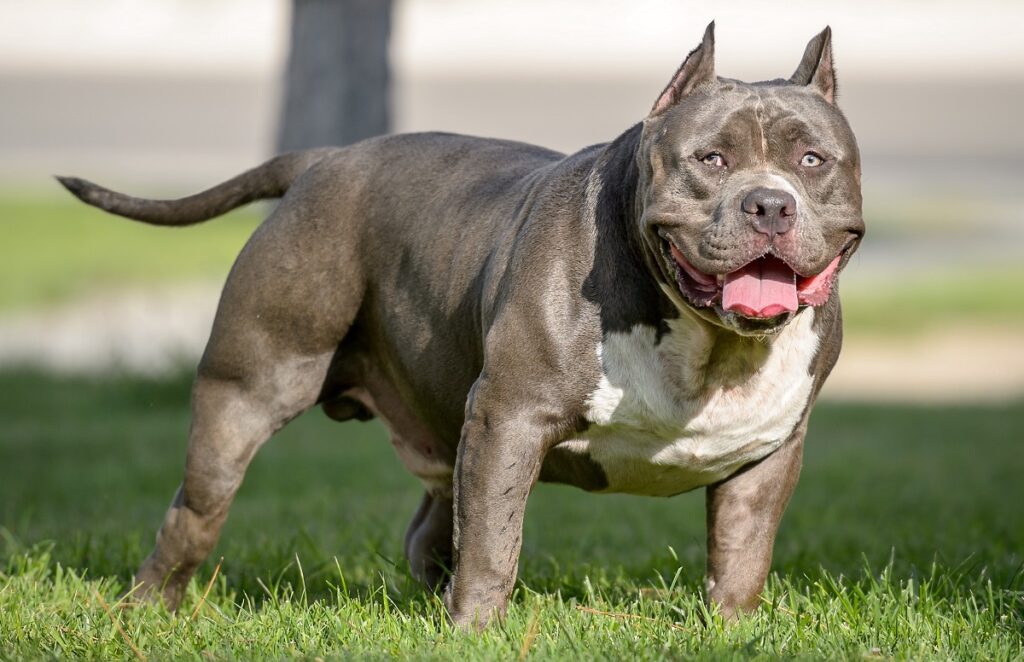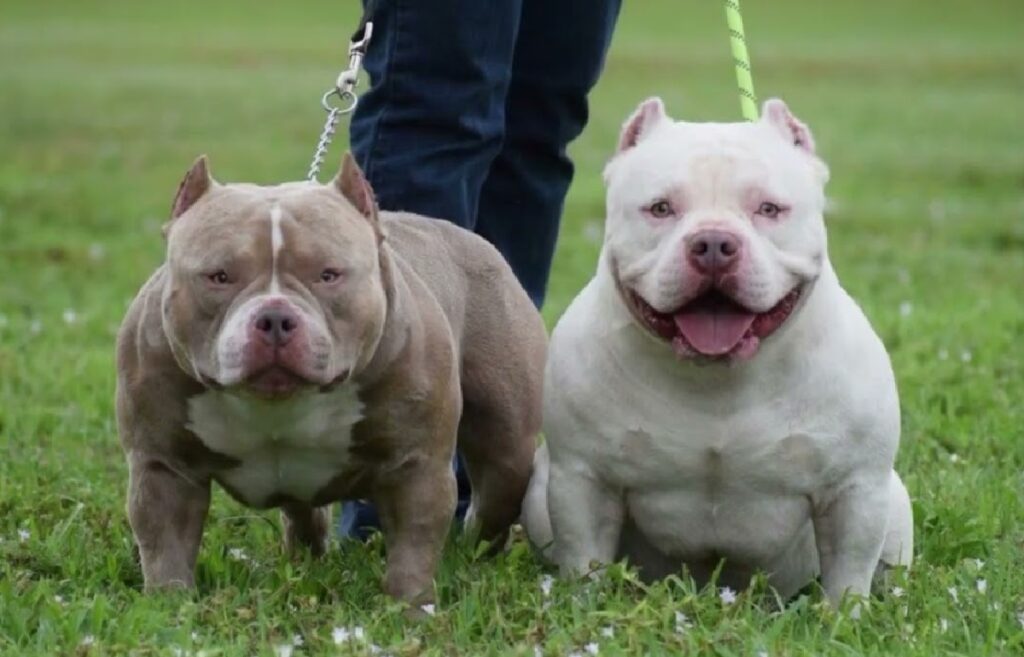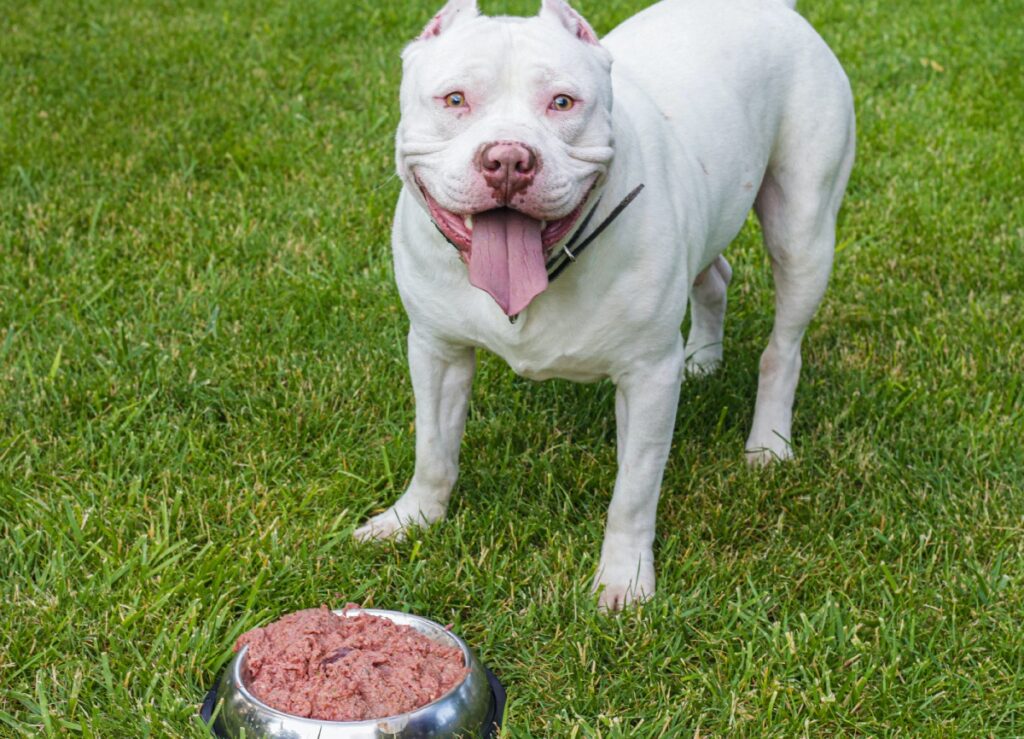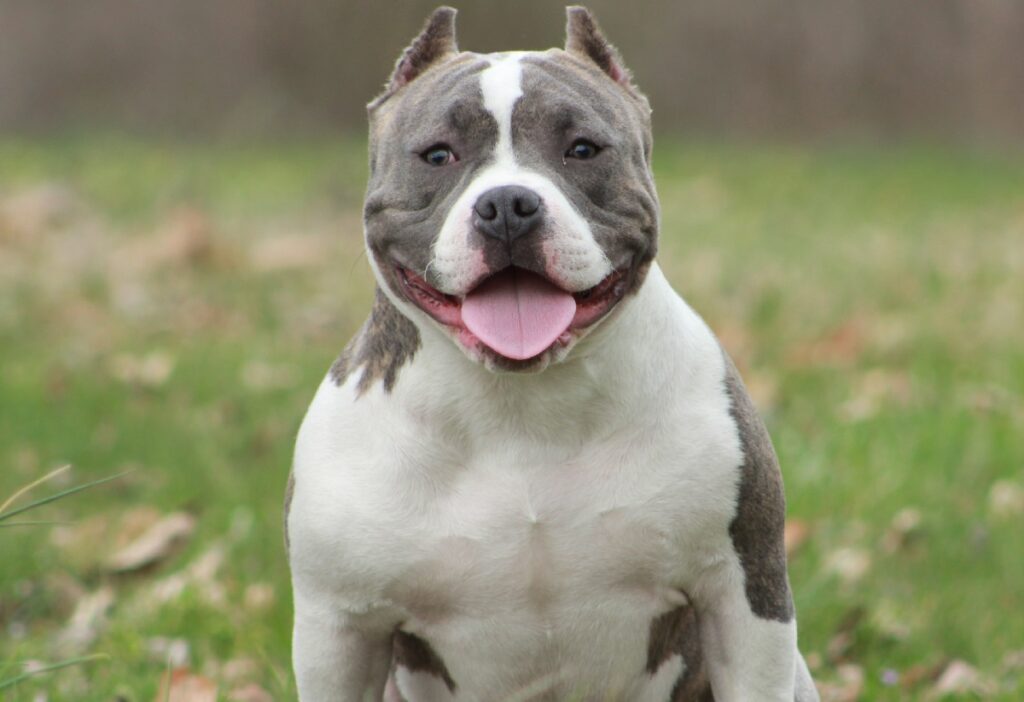Don’t let the “Pitbull” name intimidate you. Pocket Pitbulls, a smaller variation of the American Pit Bull Terrier, are proving to be charming and affectionate companions. These compact canines pack all the playful energy and loyalty of their larger cousins into a more manageable size, making them ideal for apartment living or those seeking a less physically imposing pet. While maintaining their muscular build and distinctive look, Pocket Pitbulls offer a unique blend of power and portability, making them a rising star among small dog breeds. Discover the truth behind these often misunderstood sweethearts – they might just be the perfect pocket-sized pal you’ve been searching for.
Have you ever met a pocket pitbull? They have all the charm, goofiness, sweetness, and adorableness of a regular-size pittie dog, but they are a smaller version, allowing you to scoop them up for smooches and cuddles.
A pocket pitbull puppy’s parent breeds are an American pitbull terrier and a Patterdale terrier (or another smaller bully), resulting in pocket pits that are one-third smaller in height and weight than a regular-sized one — a significantly smaller pocket bully.
When I volunteered for my local shelter, I met dozens of darling pitbulls and pitbull mixes. Our endearing nickname for a smaller one was “pocket pitbull.” Before meeting them in person, I didn’t know how ridiculously beautiful, loving, goodnatured, and fun they are — which makes both the regular and the pocket pitbull great family dogs. As a matter of fact, my very sweet niece is a smallish pitbull terrier.
The term “pitbull” is used for a few dog breeds (the bull terrier, American Staffordshire Terrier, and Staffordshire Bull Terrier) that descended from bulldogs and terriers. They have different appearances and dispositions.
The pocket pit has become a very popular breed in the last two decades because they are small for apartment living, portable, fun, and great with very small children. Some consider them mini watchdogs.
Breed Origin
Pitbull dogs descended from British bull and terrier dogs that were cross-bred in the 19th century to be fighting dogs or act as a hunting dog. They were also used for a cruel “sport” called bull-baiting.
Pitties were imported into the United States in the 1870s, where they have been known as American pitbull terriers. The pocket pitbull is a relatively new breed and a cross between the American bully and the Patterdale terrier.
The Pocket Pitbull is a designer dog that was created when someone used an American Pit bull Terrier with a Patterdale Terrier as parent breeds in the 1990s. Both dog breeds are recognized by the United Kennel in England but not by the American Kennel Club.
Patterdale terriers were bred in the 1960s to hunt foxes, so they are active and fearless and enjoy exploring. They love retrieving because they were originally bred to chase foxes. The Patterdale terrier likes to take a couple of walks a day. They are similar to American pitbull terrier dogs in terms of exercise needs and origins.
The first generation of the crossbreed may have been accidental, but then it became popular. Some people have bred Boston Terriers and French Bulldogs with pit bulls to create pocket pits.
A pocket pitbull has either brown or amber eyes with a variety of coat colors: tan, chocolate, gray, brindle, fawn, red, blue, white, black, cream, brown, black, and Pied coloring. Their fur is straight and almost as long as medium length with pretty much normal coat density.
Pocket Pitbull
Pocket pitbulls are about one-third the size and weight of a regular pitbull terrier and are bred specifically to that size — think of them as fun-sized, like candy.
Pocket Pitbull Weight
Pocket Pitbulls weigh 11 to 22 pounds, a good weight to carry in our arms.
Pocket Pitbull Height
Pocket pit bulls are approximately 12 inches to a maximum height of 16 inches tall, and they can take two to three years to fully mature.
Miniature Pitbull Puppies
Miniature Pitbull puppies are the epitome of ‘small but mighty.’ These charming little pups are a testament to the saying that good things come in small packages.
Miniature Pitbull Location
Miniature pitbulls are bred in the United Kingdom, but in the United States, when pitbull mixed breed dogs are small, we lovingly refer to them as pocket pitbulls because anything miniature is so cute.
Teacup Pitbull Diet
High-quality food is recommended for the little pittie dog breed, and maintaining a healthy weight is a must. Prevent obesity with regular exercise and/or rigorous playtimes.
Pocket Pitbull Lifespan
The average lifespan of a pocket pitbull is 11 to 13 years. A healthy lifestyle of nutritious food and exercise will increase these pit bulls’ lifespan.
Conservation Status
Did you know that dogs can be trained to search for invasive species, at-risk species, wildlife crime, and contaminants like gas leaks in pipelines, agricultural pests, heavy metals on shorelines, and more? Because miniature pit bulls are highly trainable, they can succeed in the aforementioned careers.
Pocket Pitbull Fun Facts
- They are a great family dog for active families
- Very smart, so they love food puzzles
- Loyal and protective
- Energetic and love to play and walk
- Low-maintenance fur care
- The miniature pitbull is also called a teacup mini pitbull but is 11-22 pounds, which is much bigger than a teacup Maltese, Yorkie, etc., that weighs around four pounds.
Pocket Pitbull as Pet
Pocket bullies make great pets because they are sweet dogs. Patterdale terriers’ characteristics are being good-natured, affectionate, high energy, and they have an independent personality. Add in the pitbull temperament of playfulness, easy-going, loving, and enthusiastic, and you have a fun little pocket pitbull.
Temperament and Personality
Pocket Pitbulls are loving, protective, loyal, happy, easy to train, good with very small children, very intelligent, and affectionate. They were known as the “nanny dogs” years ago because they are gentle and protective of children. Breeders purposely bred out aggressive behavior and being overly territorial to create pocket pits.
Grooming
Part of the appeal of the pocket pitbull is that they don’t need frequent grooming. Their short coat only requires a bath every two to six times each year (depending on how often they play in dirt and mud, etc.) and a brushing every week or so.
If you don’t want to use your own bathtub, some pet supply stores allow people to wash their own dogs in their tubs.
Training
Miniature Pitbulls need to be properly trained like other pooches and need socialization with other dogs, different people, children, sounds, experiences, and places. Training and socialization make the puppy feel confident in a variety of situations. Because pitbulls were bred for aggression, it’s very important to train them to be social.
Obedience training is important for basic commands like sit, come, stay, and heel. Positive reinforcement — meaning using praise, puppy treats, and toys — is the best method because punishment-based training can make your puppy anxious or fearful. Fortunately, mini pits are easy to train.
Extinguishing bad behavior like barking constantly or gnawing on furniture is crucial when your pocket pitbull is a puppy or as soon as you adopt them. Again, this should be simple because pocket pits are very easy to train. They need to know that you are the pack leader.
Small Dog Syndrome is the term used when little dogs bark excessively and act like they are going to attack because they feel tiny and overwhelmed by the size of the world and everything in it. Again, mental stimulation keeps them busy and distracted from insecurities.
Exercise and Diet
Like a pit bull, a pocket pitbull requires vigorous exercise and mental and physical stimulation. The mini pitbull loves interactive toys that give them mental stimulation. Daily exercise, whether regular walks or playing in a fenced yard, keeps your miniature pitbull happy and calm.
Exercise also prevents boredom, which can lead to bad behaviors.
Mini pitbulls enjoy an active lifestyle, and when they are puppies they really need to work off that crazy puppy energy.
Walking a dog is a great exercise for humans, too. It may seem like lots of sniffing and peeing, but you’re moving, so it pretty much counts as a low-impact aerobic activity because your heart rate will go up if you walk for over 10 minutes.
Relationship with Children
Miniature pitbulls are great with children, especially if you introduce them to kids when the dog is young. However, if you adopt a mini pit who isn’t young, they will probably love your child because most of them like kids.
Relationship with Family
They are loving, eager to please, and protective — making miniature pitbulls great with the whole family. They also suffer from separation anxiety if their humans are out for an extended period, so consider how much time you’ll be able to spend with your dog so you know if a pocket pit is the right breed dog for you.
Regarding separation anxiety, there are fun activities that canines enjoy when everyone’s out of the house. Have you seen snuffle mats? You hide snacks in a mat, and your dog has to forage for them. They are stimulating and help your pooch forget that no one is there to adore them for a few hours.
Pros and Cons of Owning a Pocket Pitbull
Let’s explore what makes these little canines so endearing, their unique characteristics, and what it’s like to welcome one into your home. Get ready to discover why Miniature Pitbulls are stealing hearts around the world!
Pros
Pocket Pits have sweet personalities and are just plain charming, loving, adorable, protective, and playful. They want to be with their family and are excellent company, plus they are wonderful with children. You can have a fun walk together, nap with your pup, just hang out with them, take them on adventures, and anything else. They are very portable, so you can take them everywhere and anywhere.
Being low maintenance is also a pro because you can bathe them yourself and don’t have to drop them off at the groomers every month.
Cons
The main con is that they are expensive because a purebred pocket pit bull is a designer dog, so there are less of them bred and less available than other purebred dogs.
Most breeders charge $1,500 to $2,500. Alternatively, you could go to your local animal shelter or search petfinder.com and find a small pitbull mix. Rescue organizations and animal shelters are full of pittie terriers, so go meet them and determine if they have the sparkly personality of a pure-breed pocket pit — and they probably will!
Purebred pitbulls usually cost about $500, so you can expect to pay between $1,500 – $2,500 for a Miniature Pitbull.
Another con is that they are susceptible to several health problems (see below), but all dogs — and people — have a few health problems.
General Health Issues in Pocket Pitbulls
Pocket Pitbull dogs do have a few health problems:
Skin Allergies
The pocket pitbull’s prone to skin allergies that can be found in the folds of their skin, on their belly, feet, and ears. Common pitbull allergies can be seasonal, food, and fleas. Try a grain-free dog food if you think food allergies are bothering them. Limited ingredient food helps identify what the allergy is.
Hypothyroidism
Pocket bullies are susceptible to hypothyroidism, which causes low hormone levels, weight gain, lethargy, and a dull coat. A balanced diet helps with hypothyroidism because the condition takes nutrients from the body. Fruit and veggies are very healthy. Give your canine fish, seaweed, and kelp to keep iodine levels high.
Heart Diseases
The Patterdale terrier is predisposed to heart disease, so keep an eye out for the following symptoms:
- Trouble sleeping
- Coughing
- Fatigue
- Weight loss
- Loss of appetite
- Difficulty exercising
- Breathing difficulties
Annual vet heart checkups are important to look for abnormal heart rates and heart murmurs, and maintaining a healthy weight helps keep your dog from developing heart disease. A diet low in salt prevents water retention, which puts a strain on the heart and causes heart disease.
Omega-3 fatty acids — found in flaxseed oil and fish have omega-3s — can also help dogs with heart disease.
Eye Problems
Another of miniature pitbulls’ health problems is being vulnerable to eye issues that can be painful, and some must be treated immediately or may result in blindness — so please have their eyes checked annually.
Fruits and vegetables with antioxidants can help your dog’s eyesight:
- Blueberries
- Broccoli
- Sweet potatoes
- Kale
- Carrots
- Eggs
- Cold water fish (like salmon or sardines)
Hip Dysplasia
Another of the health concerns that pitbulls are prone to is hip dysplasia, which is abnormal growth of the hip joint and can be painful and may cause lameness. Diet and exercise help alleviate the problem, which normally occurs as canines age. Dysplasia can cause early-onset arthritis.
Maintaining a healthy weight in your dog is essential, as the less weight on those joints, the less strain on those joints. Dysplasia happens when the socket or ball grows faster or slower than its counterpart.
Joint health is addressed with foods that promote joint health, which usually include glucosamine and chondroitin, as well as high levels of omega-3 oils. As a preventative measure, you can give your young dog a little to promote healthy joints and hopefully alleviate health concerns.
Popular Pocket Pitbulls Names
If you’re looking for female pitbull names or just general pitbull dog names, we’ve got a treat for you. Here are the top 20 pocket pittie popular names:
- Bella
- Luna
- Blu
- Nala
- Nova
- Roxy
- Daisy
- Lola
- Lucy
- Rocky
- Stella
- Ace
- Max
- Zoe
- King
- Duke
- Diesel
- Coco
- Apollo
- Tank
FAQs
What Are the Dog Breeds Similar to a Pocket Pitbull?
Some breeds that are similar to the pocket pitbull include American Bully, American Bulldog, American Staffordshire Terrier, Cane Corso, Dogo Argentino, French Mastiff, and many more.
What Is the Cost of Owning a Pocket Pitbull?
A reputable breeder will charge between $500 and $5,000 for pure-breed pocket pitbulls. Adoption fees are in the range of $300 to $350 for puppies but less for adult dogs.
Initial costs could be around $300 or more for dog treats, kibble, toys, bed, bowls, leash, collar, kennel/crate, and grooming supplies. A license is approximately $20. Microchipping is $25 to $60 and is VERY important. Neutering or spaying can be $340, and the first vet visit is around $300.
Annual Cost of Owning a Pitbull
Each year, you will probably spend, on average:
- Dog foods and treats — Maybe$1,140.
- Veterinary visits — Younger dogs go to the veterinarian annually, but dogs that are seven years or older may go a couple of times. Veterinarian visits can be approximately $100 each.
- Grooming — The mini pitbull dog’s coat is low maintenance, but if you’re unable to bathe your pup at home, a groomer is about $75 to $300 each year if you go every three months.
How Should I Take Care of My Pocket Pitbull?
They don’t require frequent baths or constant brushing because their short coats are easy to care for. Brush with a firm bristle brush once or twice a week. Clip nails or have your veterinarian cut them. Teeth brushing is also important, although sometimes challenging, with their tongue thrashing around in their little mouths.
Exercise
A miniature pitbull requires an hour of movement each day for their — whether they walk, run, and/or play. Like most dogs, they want to get outside and move around. Also, pitbulls are working dogs, so they love activity.
Diet
Pocket pitbull puppies do best with three small meals of quality dog food a day. Their food balance should be 30% protein and 20% fat. Give them lamb, eggs, fresh fruit, veggies, salmon, organ meat, chicken, turkey, and kelp. A pocket pitbull might also take around two to three years to mature.
Is a Pocket Pitbull Dangerous?
A pocket pit purchased from a reputable breeder is not a dangerous dog because any tendency toward aggression has been bred out of them.
Reputable breeders allow you to meet the puppies’ parents and will show you where the pocket pitbulls live.
Is There a Ban on Owning a Pocket Pitbull?
There are no breed-specific laws (BSL) governing a teacup mini pitbull. Unfortunately, a million regular-size pittie terriers are euthanized each year because of BSL, misconceptions, and overbreeding.
What Is the Difference Between a Pocket Pitbull and a Pitbull?
Both pitbulls and mini pitbulls have large heads and are muscular dogs with bulky necks and strong legs. They share traits of being very caring, loving, perky, and smart. The main differences are that the pocket pitbull breed is bred to be animal- and child-friendly and is one-third the size of regular pitbulls.
Conclusion
When horrible people force pitbulls to fight by hurting them and training them to attack other dogs, they ruin the breed’s reputation. Pitbulls can be less tolerant of other canines but are born sweet and loving. The ASPCA website endorses the breed, “A well-socialized and well-trained pit bull is one of the most delightful, intelligent, and gentle dogs imaginable.”
A pocket pitbull is one-third the size of regular pittie terriers, making them perfect for apartment living and smaller children (because little children may be frightened of large dogs). The mini pitbull is a sweet dog who is loyal, protective, very smart, and loving.
Pocket Pitbulls, though a controversial term, represent the smaller end of the Pitbull-type spectrum. While their compact size makes them appealing companions, responsible ownership is crucial. Understanding their energy levels, training needs, and potential for dog aggression, particularly towards other dogs, is essential. Proper socialization and consistent training are paramount to raising a well-adjusted Pocket Pitbull. Ultimately, these small but powerful dogs can be loving and loyal companions for the right owner committed to responsible care.

